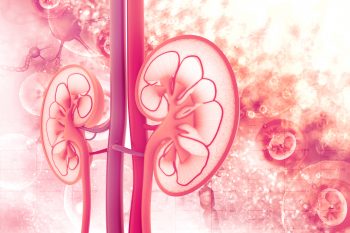
Washington, DC—Varying definitions of chronic kidney disease (CKD) and diagnosis accuracy in medical records contribute to limitations in analyses of the epidemiology of CKD. James D. Oliver, MD, and colleagues utilized laboratory and coding data in the US Military Health System (MHS) Repository to examine the prevalence of CKD as measured by International Classification of Diseases, Ninth Revision codes compared with laboratory test results. The MHS is a large database for a universal system of health coverage for US active-duty military, retirees, and family members. Demographics are similar to those in the general population in the United States.
Results of the analysis were reported during a poster session at the American Society of Nephrology Kidney Week 2019. The poster was titled CKD Prevalence in the US Military Health System (MHS) by Laboratory vs. ICD-9 Coding.
Data on patients ≥18 years of age were extracted from fiscal year (FY) 2015. Diagnosis of CKD was based on either ICD-9)codes or from laboratory tests. CKD from laboratory testing was defined by the CKD-EPI (Chronic Kidney Disease-Epidemiology Collaboration) equation as estimated glomerular filtration rate <60 mL/min/1.73 m2, urine protein-to-creatinine ratio ≥15 g/g, or urine albumin-to-creatinine ratio ≥30 mg/g.
CKD diagnoses from ICD-9 codes were defined as one or more inpatient or two or more outpatient CKD codes during the FY. Two definitions of laboratory testing were used: 2Lab+, the most recent laboratory tests in the study period being persistently abnormal over ≥3 months (gold standard); or 1Lab+, any abnormal lab during the FY. Sensitivity/specificity, chi-square, Cohen’s kappa, and McNemar’s test were used to compare ICD-9 code and 1Lab+ to 2Lab+.
Data on 3,360,305 patients were analyzed for FY 2015. Mean age was 37.6 years, and 28.9% (n=969,873) had laboratory results. Among the patients with laboratory results, 2Lab+ CKD prevalence was 2.5% overall, increasing to 9.7% for patients ≥60 years of age, compared with 1Lab+ CKD prevalence of 9.9% overall, increasing to 31.5% for age ≥60 years.
Overall, Code+ CKD prevalence was 2.8% compared with 4.8% in patients with laboratory results. Only 54.8% of 2Lab+ patients were also Code+. In the 1Lab+ group, the positive predictive value (PPV) was 0.25 and the negative predictive value (NPV) was 1.0 for the 2Lab+ group. Patients in the code group had a PPV of 0.28 and a NPV of 0.99 for 2Lab. PPVs were higher for both 1Lab and Code in patients >60 years of age (0.31 and 0.47, respectively).
In conclusion, the researchers said, “Based on ICD-9 codes, provider awareness of CKD in the MHS is low. Use of a single lab value significantly overestimates CKD prevalence and has a poor PPV compared to repeat measures. The views expressed in this abstract are those of the authors and do not reflect the official policy of the Departments of Army/Navy/Air Force, Department of Defense, Department of Health and Human Services, or the US Government.”
Source: Oliver JD, Nee, RW, Grunwald L, et al. CKD prevalence in the US military health system (MHS) by laboratory vs. ICD-9 coding. Abstract of a poster presented at the American Society of Nephrology Kidney Week 2019 (Abstract TH-PO397), November 7, 2019, Washington, DC.






 © 2025 Mashup Media, LLC, a Formedics Property. All Rights Reserved.
© 2025 Mashup Media, LLC, a Formedics Property. All Rights Reserved.